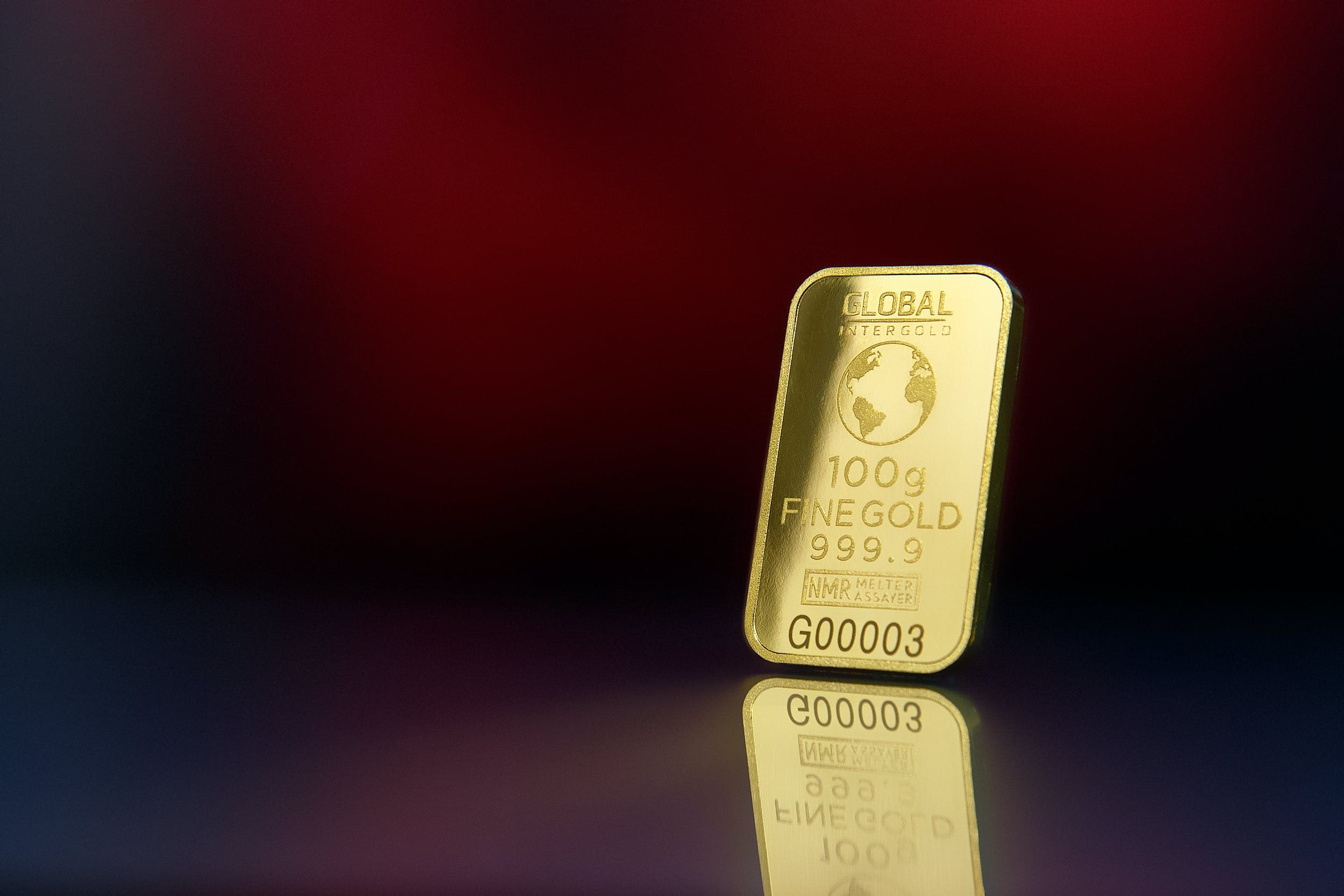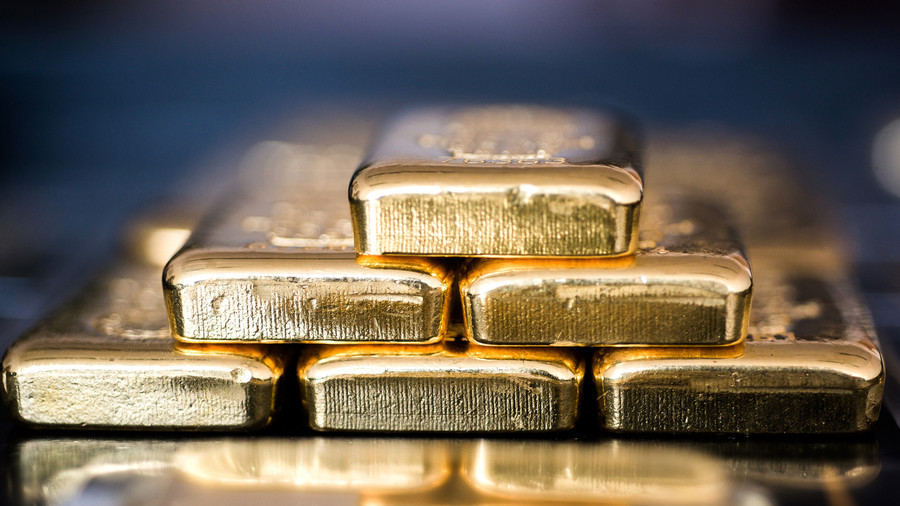List of Most Expensive Precious Metals
The Mintly Team
December 03, 2023
Precious metals have always held a unique allure and fascination for humans. Since ancient times, they have been used as a medium of exchange, a store of value, and for their aesthetic appeal in jewelry and decoration. What makes these metals precious is their rarity, utility, and desirability.
Unveiling the world of opulence, this blog explores the domain of the top most expensive precious metals. From rare finds to timeless investments, it’s a journey through the high-end spectrum of wealth and rarity. Get ready to delve into the fascinating and lavish universe of precious metals.
Rhodium
Rhodium stands out among the most expensive precious metals. It is boasting an extraordinary combination of rarity, brilliance, and industrial utility that sets it apart in the commodities market. Extracted as a by-product of platinum and nickel mining, rhodium’s scarcity underpins its high value. Its lustrous, silver-white finish not only makes it highly desirable for high-end jewelry. It is often as a plating for white gold and platinum to enhance durability and reflectivity. The Rhodium metal also contributes to its status as a luxury item.
In the automotive industry, rhodium’s anti-corrosive properties and ability to withstand extreme temperatures have made it an irreplaceable component in the production of catalytic converters, devices that reduce harmful emissions from vehicles. This industrial demand plays a significant role in its pricing volatility. Furthermore, the metal’s low abundance and concentrated supply — primarily in South Africa, Russia, and Canada — can lead to sharp price increases when mining disruptions or geopolitical tensions occur.
Investors often view rhodium as a potent hedge against inflation and a diversification tool within a precious metals portfolio. Despite its price swings, the allure of rhodium as one of the most expensive precious metals persists, driven by its unmatched qualities and indispensable role in modern technology.
Platinum
Platinum, with its silvery-white luster, holds a prestigious spot among the Most Expensive Precious Metals in the world. Esteemed for its rarity and high economic value, it is often found in South Africa, the largest supplier, alongside Russia and Canada. Platinum’s appeal stems from its scarcity; it is 30 times rarer than gold, which justifies its hefty price tag.
Not only is platinum prized in jewelry for its vibrant gleam and durability, but its resistance to tarnish makes it highly sought-after. This metal does not corrode or oxidize easily, ensuring its pieces retain their beauty over time. Its hypoallergenic nature also makes it a favored choice for those with sensitive skin.
Beyond aesthetics, platinum’s industrial applications contribute to its status. It’s essential in catalytic converters for vehicles, facilitating chemical reactions to reduce harmful emissions. Additionally, it plays a critical role in medical instruments and devices due to its biocompatibility.
The investment demand for platinum also reflects its position as one of the Most Expensive Precious Metals. It’s a tangible asset that investors turn to during economic instability. Its price is influenced by various factors, including mining strikes, auto industry demands, and investment trends, making the platinum market dynamic and closely watched by investors worldwide.
Gold
Gold, a symbol of wealth and prosperity, has been coveted by civilizations for millennia. Among the most expensive precious metals, gold stands out for its unique combination of beauty, malleability, and rarity. Historically, it has been used as currency, in jewelry, and as a standard for monetary policies in many countries.
Gold’s allure is not just aesthetic. Its resistance to tarnish and corrosion makes it an ideal material for long-lasting ornaments. The metal is a safe haven for investors during economic uncertainties. Unlike other most expensive precious metals, which may have industrial applications that dictate their value. Gold’s worth is largely independent of its functional use. It is valued for its intrinsic qualities and the status it confers.
In the global market, the price of gold often reflects the economic climate, rising in times of inflation as people seek to protect their wealth. This demand drives its status as one of the most expensive precious metals. Moreover, its scarcity ensures that it retains its value over time, making it a preferred choice for those looking to preserve their purchasing power.
Aqua Regia Gold Refinery Process is very unique and it is followed carefully to get the Gold with highest purity. Whether in the form of intricate jewelry, investment bullion, or sovereign coins, gold remains a pinnacle of value and an enduring symbol of affluence, solidifying its position at the apex of the most expensive precious metals.
Palladium
Palladium, a lustrous silver-white metal, has distinguished itself as one of the most expensive precious metals, often outpacing even gold in value. Belonging to the platinum group metals (PGMs), palladium is prized for its rarity and unique chemical properties. Its primary use is in catalytic converters for automobiles, a requirement for the reduction of harmful emissions, which significantly drives its demand.
The metal’s scarcity is a key factor in its high price. Palladium deposits are rare and found in only a few locations worldwide, with Russia and South Africa being the major producers. This limited supply, coupled with growing demand, particularly from the automotive industry, has resulted in a market where prices can spike dramatically.
Moreover, palladium’s role extends beyond industrial applications. The metal is also a popular choice for jewelry, dental equipment, and electronics. Its ability to absorb hydrogen makes it valuable for storage and purification purposes as well. The investment sector has taken note of palladium’s potential, with investors often viewing it as a hedge against inflation and currency devaluation.
As emission regulations become more stringent globally, the demand for palladium is expected to remain robust. Thus, its status among the most expensive precious metals is not only a reflection of current market conditions but also an indicator of its importance in a future geared towards sustainability and cleaner technologies.
Iridium
Iridium, a member of the platinum group metals (PGMs), is one of the most expensive precious metals due to its rarity and remarkable properties. The metal is found in meteorites and within the Earth’s crust. This lustrous, silvery-white metal is the most corrosion-resistant element known, even at temperatures as high as 2000 degrees Celsius. Its high melting point and hard nature make it extremely durable, yet difficult to work with.
Demand for iridium surged particularly in the automotive industry for spark plugs and in the electronics sector for high-end electronics. Additionally, it plays a critical role in the production of crucibles for crystal growth, which are essential for manufacturing large-scale touchscreens and LEDs. These diverse applications underscore the value of iridium.
However, its scarcity and complex extraction process contribute to its exclusivity and price. You can call Iridium is one of the most under the radar precious metals. Most iridium is derived as a byproduct from nickel and copper mining. This means its production is not directly responsive to iridium market demands, adding to its cost. Its astronomical price tag is further justified by its use in specialized scientific equipment, such as particle physics detectors, where no other metal can withstand such extreme conditions.
With its extraordinary attributes and limited availability, iridium remains one of the most expensive precious metals on the market, reflective of its unique position within the array of natural elements.
Silver
Silver, often cast into the shadows by its flashier counterparts like gold and platinum. But it still holds its ground as one of the most expensive precious metals. It has been revered for its lustrous sheen and versatile properties. Silver has been a cornerstone of wealth and symbol of status since ancient civilizations. The supply of silver is abundant in the market when comparing to other precious metals. It commands a significant market value, thanks to its wide array of applications.
The industrial demand for silver, particularly in the realms of electronics, solar panels, and medical instruments, showcases its invaluable functional use. It’s the highest electrical conductor among metals, making it indispensable for high-precision instruments. Moreover, silver’s antibacterial properties have been exploited in medical applications, where sterility is paramount.
In the world of jewelry and fine goods, silver’s aesthetic appeal remains undiminished. Its ability to reflect light surpasses that of other most expensive precious metals. This is allowing it to capture the hearts of those seeking a blend of luxury and understated elegance. Its affordability in comparison to gold and platinum ensures that it remains accessible while still exuding a sense of exclusivity.
As investments, silver coins and bars continue to be a popular choice for those looking to diversify their portfolios with precious metals. It may not always top the charts as the most expensive. Silver’s versatility and intrinsic value solidify its status as a prized asset in the world of precious metals.
Osmium
Osmium is a hard, brittle, blue-gray transition metal in the platinum group that is found as a trace element in alloys. It has a high melting point and an extremely high density. In fact, osmium is the densest natural element. This combination of properties makes it useful in applications that require durability and strength.
The prices of these precious metals fluctuate due to various factors like economic conditions, supply-demand dynamics, geopolitical issues, and technological advancements. Investing in them can be a good way to diversify your portfolio. But it’s important to do thorough research and consider their volatility.
Final Thoughts
In conclusion, precious metals are not just a symbol of wealth and status. But they also play a crucial role in many modern industries. Their unique properties and rarity make them some of the most expensive materials on earth.
All Tags
